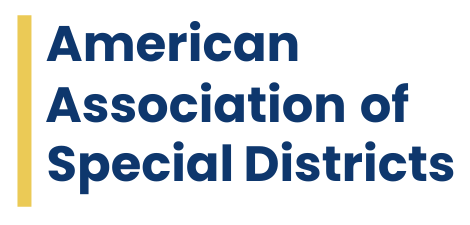What are Special Districts?
What are Special Districts?
A special district is a local unit of government established to provide a specific service, or set of public services, to a community. These local government units are political subdivisions of a State, with specified boundaries and significant budgetary autonomy or control. Special districts, like other units of local government, are formed as political subdivisions of a state.
These local governments are altogether responsible for the delivery of a range critical infrastructure and essential services including, but not limited to: drinking water, wastewater treatment, irrigation, resource conservation, fire protection, ambulance, healthcare, parks & recreation, roads and highways, mass transit, airports, sea and river ports, community development, flood control, libraries, mosquito abatement, electricity, broadband, and more.
This sector of local government is referred to in different fashions across states, referred to as “special purpose districts,” “special taxing districts,” “special purpose governmental entities,” “authorities,” “municipal authorities,” or simply “taxing district.”
Special districts are exclusive of local education agencies, e.g. school districts, regional education districts, vocational development districts, and community college districts.
Special districts exist in all 50 states. Each state defines the scope of public services special districts may provide in a state, their purpose, and their structures, in what are known as “enabling acts” or “principle acts.” This diversity in approach results in a form of local government that altogether presents itself on paper as a web of structural complexities, more so than other forms of municipal, educational, or county unit of government.
In practice, though, special districts are one that facilitates an effective model for the hyper-local delivery of reliable public services that enhance the quality of life, move economies, and provide a lifeline for millions of Americans each and every day.
The 2022 Census of Governments counted 39,555 units of special district government across 38 unique special district functions in 50 states and the District of Columbia. Through analyzing this data coupled with other Census surveys and products, we can begin to shed light on special districts’ significance. For instance, we understand that special districts provide 6 percent of all local government jobs in the United States. When removing local education agencies, the local government workforce becomes 12 percent, altogether injecting an estimated $300 billion dollars annually into local, regional, and state economies.
%
Local Government Infrastructure Workforce
%
